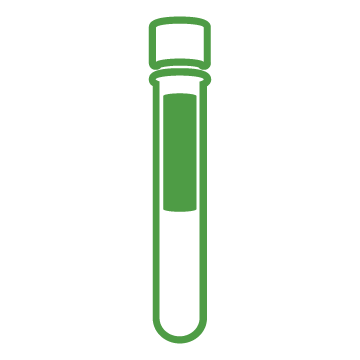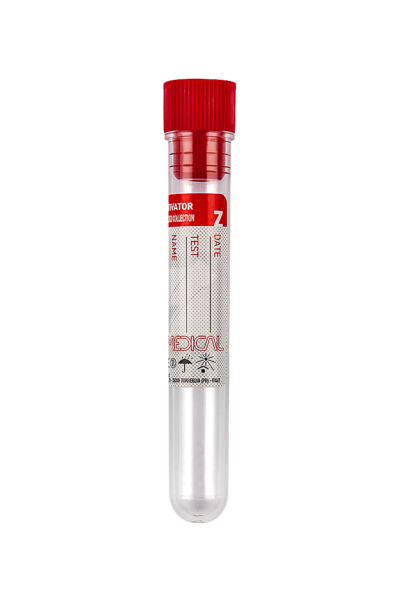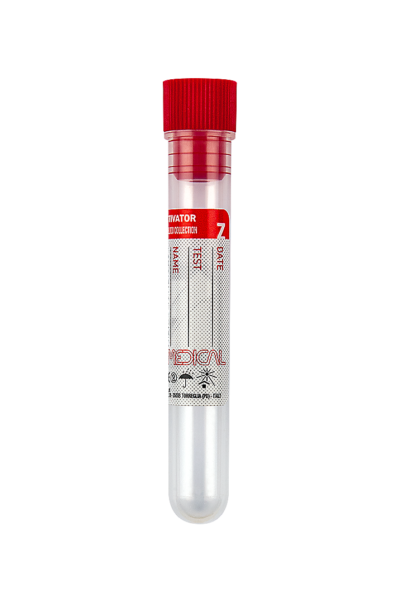Serum separator tubes
 Serum separator tubes are an innovative and reliable tool for the collection of high quality blood samples. Thanks to their advanced technology, they allow fast and reliable separation of serum from blood clot (fibrin and cells), reducing waiting times and improving the accuracy for laboratory test results.
Serum separator tubes are an innovative and reliable tool for the collection of high quality blood samples. Thanks to their advanced technology, they allow fast and reliable separation of serum from blood clot (fibrin and cells), reducing waiting times and improving the accuracy for laboratory test results.
Accurate tests, precision, and a significant reduction in waiting times allows doctors to make important decisions quickly. These advantages make serum separator tubes an important support in different clinical contexts, from disease diagnosis to personalized therapies: a tool that improves healthcare and patient assistance.
What are serum separator tubes made of and how do they work
Serum separator tubes are made of a transparent polypropylene or PMMA tube with a silicone cap in a standard color, depending on the type of use, which may be customizable.
The separator, placed in the lower part of the tube, is made of acrylic gel or granules (made in silica or a silica and polymers mix).
Its density lies between serum and blood clot, to create a stable barrier, so the serum can then be taken directly from the tube.
There are different types of serum separator tubes, depending on the applications: electrolytes, coagulation (hormones, serology, immunohematology and TDM), etc.
In tubes with gel separator and clot activator, the inner walls of the tubes are fitted with a coating of micronised silica particles, to activate coagulation when the tube is turned upside down.
Benefits and applications of serum separator tubes
As mentioned, one of the main benefits in using serum separator test tubes is the accuracy in
results. Due to the separation of serum from whole blood, tests are less affected by the presence of cellular components. Rapid separation of serum from the clot after centrifugation allows laboratory technicians to process the sample immediately. Also, they can be applied to a wide range of laboratory tests, including routine testing, screening tests for infectious diseases, organ function tests and therapeutic monitoring tests.
Some of the most common tests performed using serum separator tubes involve blood sugar, lipidemia, kidney function, liver function, electrolytes and tumor markers.
How to choose the serum separator tubes
In order to ensure reliable test results, several factors must be considered in choosing serum separator tubes. First of all the test to be performed: coagulation tests, clinical chemistry and so on. In addition, the volume and the need for particular additives, such as the clot activator.
As for any kind of test tube, it is important to follow the best practices for the correct execution of the sampling: proper preparation of the area, the choice of the right type of needle, and appropriate sample collection to avoid contamination.
It is highly suggested to keep the test tubes at a good temperature (between 2 and 8 ºC) and in their specific containers to protect them from light and avoid mechanical stress.
Common issues for serum separator tubes
Proper collection of blood samples ensures reliable results.
The most common issues in using serum separator tubes are:
1. Serum separation.
Test tubes with good quality gel usually prevent problems in serum separation: if this is not done correctly, it may be necessary to check the tests expiration date or to ensure that they are properly stored. Also, check whether the blood collection procedure has been properly followed, such as the inclination and mixing of the test tube.
2. Sample contamination.
The blood collection area must be always properly cleaned and disinfected. In addition, check that there has been no external contamination during collection or handling of the test pieces.
3. Inadequate sample quantity.
If the amount of blood sample collected is not enough, it may be necessary to check whether the correct type of test tube was used and whether the blood sampling technique was performed correctly
























